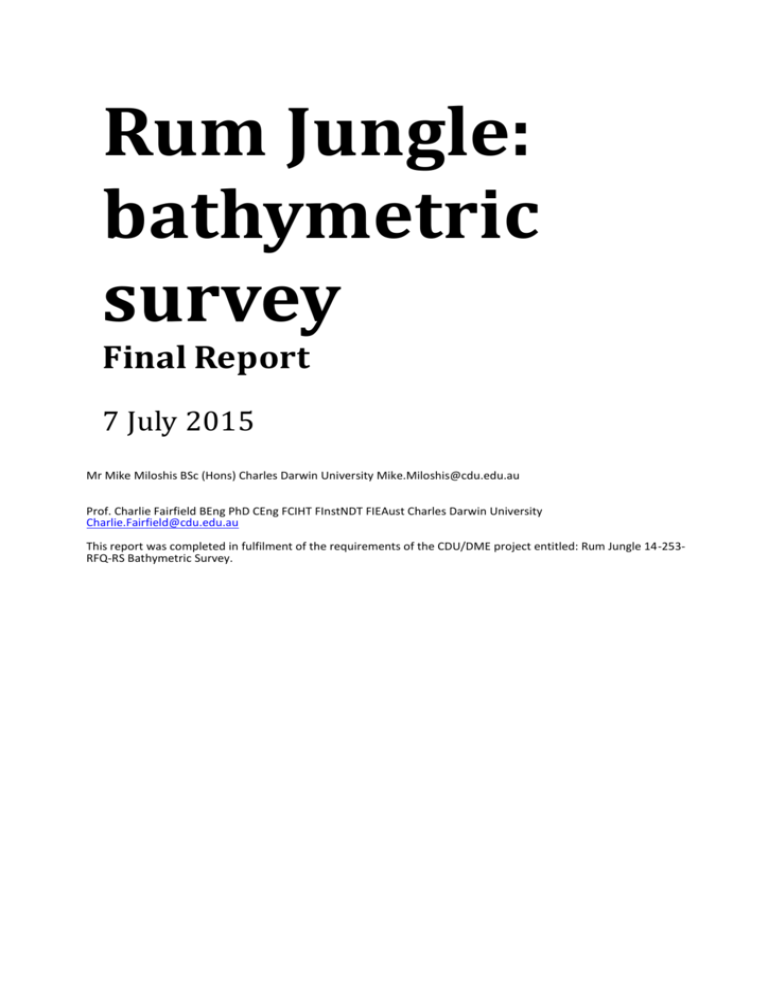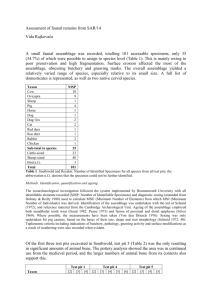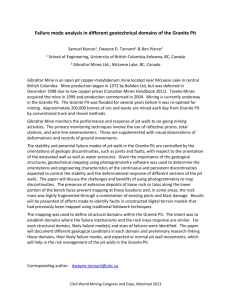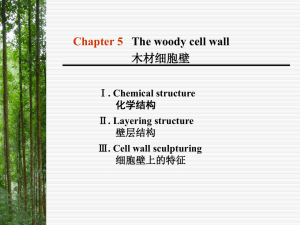Report - Northern Territory Government
advertisement

Rum Jungle: bathymetric survey Final Report 7 July 2015 Mr Mike Miloshis BSc (Hons) Charles Darwin University Mike.Miloshis@cdu.edu.au Prof. Charlie Fairfield BEng PhD CEng FCIHT FInstNDT FIEAust Charles Darwin University Charlie.Fairfield@cdu.edu.au This report was completed in fulfilment of the requirements of the CDU/DME project entitled: Rum Jungle 14-253RFQ-RS Bathymetric Survey. Contents Background ................................................................................................................................ 2 Introduction ............................................................................................................................... 2 Survey methodology .................................................................................................................. 3 Survey dates ....................................................................................................................... 3 Method .............................................................................................................................. 3 Data formats and post-processing ..................................................................................... 4 Results ........................................................................................................................................ 4 Optical level surveying ....................................................................................................... 4 Bathymetry ........................................................................................................................ 5 Pit 1 ................................................................................................................................ 5 Pit 2 ................................................................................................................................ 7 Issues arising during data recording and analysis.............................................................. 9 Statement of estimated accuracy ...................................................................................... 9 Conclusion .................................................................................................................................. 9 Acknowledgement .................................................................................................................. 10 References ............................................................................................................................... 10 Page 1 of 11 Background This report was written for the Northern Territory Government’s Department of Mines and Energy (DME) to provide them with bathymetric survey data pertaining to the two water-filled mine pits at the former Rum Jungle mine site, located 105 km (by road) south of Darwin, near Batchelor in the Northern Territory (NT). The purpose of the bathymetric surveys was to gather accurate, current, high-resolution data on the former Rum Jungle mine site pit lakes. The resolution provided was greater than that of earlier bathymetric surveys (Boland, 2008). DME required the best data accuracy and resolution available to image the landform(s) lying beneath the water surface (former pit topography and its solid contents), and to provide an accurate measure of the water volume currently filling the two mine pits. This included the need for sufficient resolution to detect any old haul routes, such as may be present at time of survey, into the pits. In particular, the bathymetric survey provided: A measure of the volume of water in each pit; Images defining the below-water-level topography of the pits; and Electronic copies of bathymetric models and hypsographic curves for the pits. Introduction This report includes: Details of the survey methodology and data: survey dates, sensor used, and the postprocessing methods used; Results defining the volume of each pit (in m3) and the topography thereof (with images and hypsographic curves); Issues arising during data capture and processing (limitations of the dataset); and A statement of expected accuracy. Under separate e-mail cover (dated 26 June 2015) additional material submitted includes: Electronic copies of the bathymetric models and hypsographic curves for the pits. Uploaded to the Rum Jungle FTP site: Contour files and the relevant raw data files in .dxf file format. Page 2 of 11 Survey methodology Survey dates The main pit (Pit 1) was surveyed on 16 December, 2014 and resurveyed on 3 February, 2015. The intermediate pit (Pit 2) was surveyed on: 13 January, 2015 and resurveyed on 3 February, 2015. A general location plan is shown in Fig. 1 (extract taken from rectified site plan, DME, 1977). Method With reference to the site benchmark (BM), the rise-and-fall method, using a Wild Heerbrug optical level (serial number A101692), was employed to ascertain the water levels in Pits 1 and 2 relative to the benchmark (north-westernmost corner of the concrete plinth forming the base of the shed (see Fig. 1) adjacent to Pit 1). × Pit 1 Pit 2 Fig. 1 General location plan (temporary site bench mark: ×) (Image extracted from rectified site plan, DME, 1977) Thereafter, a manned, 4.5 m long, vessel equipped with a Lowrance HDS-8 sonar (Gen 2) capable of structure scanning, down-scanning, and side-scanning to a depth of approximately 300 m (Lowrance, 2015), was launched from temporary access ramps onto each pit in succession. The vessel was also equipped with an on-board global positioning system (GPS). Upon launching the vessel, the pits were traversed in a grid-like fashion with orthogonal transects at approximately 5 m intervals in both directions. Subsequent re-scanning was undertaken radially from approximate pit centre to pit edge and vice versa: this allowed better capture of steep sections of the pit walls. The velocity of the vessel was maintained at no more than 2 km/h throughout. Page 3 of 11 The transducer was transom-mounted to the rear of the vessel and lay at a depth of 0.250 m below the water surface. The ping rate was set to its maximum (20 per second) and the transducer frequency was 200 kHz, with a beam angle of 22°. Data formats and post-processing All data were recorded in .sl2 proprietary sonar log formats. The data represented the down-scan data sets containing position (x, y) and depth (z) to give a set of point coordinates (x, y, z) which was imported to Google Earth Pro for positional checking and insertion of artificial barriers in ArcGIS which prevented unrealistic interpolation between points at steep, or near-vertical, cliff edges in ArcGIS. The dataset for each pit was then imported into ArcGIS with any sets of duplicate (x, y) points assigned an average depth therein. The barriers, manually inserted in ArcGIS, formed a set of delimiting points across which no interpolation of topographic features could take place. This prevented the generation of unrealistic features in areas of high gradient. In ArcGIS, spline-based interpolation between (x, y, z) data was used to generate the three-dimensional (3-d) bathymetric model and subsequent contour map of the pits. Volumes were calculated by integration in ArcGIS and slices at 5 m depth contour interval were used to derive the hypsographic curve for each pit. Finally, the 1 meter contour plots from ArcGIS were converted to AutoCAD .dxf format files) for use in DME’s preferred software. Results Optical level surveying The rise-and-fall levelling method was used to ascertain the vertical height difference between the benchmark and the transducer level at the time of survey of the two pits. The vertical height changes were as follows (negative values indicate water levels below the temporary site benchmark): Rum Jungle Benchmark: 67.15 m AHD BM to water level (Pit 1): Water level to transducer: BM to transducer (Pit 1): -7.977 m -0.250 m -8.227 m 58.92 m AHD used hereafter for Pit 1. BM to water level (Pit 2): Water level to transducer: BM to transducer (Pit 1): -8.420 m -0.250 m -8.670 m 58.48 m AHD used hereafter for Pit 2. Page 4 of 11 Bathymetry The grid and radial scanning patterns produced the following results: Pit 1 Maximum depth: 14.18 m AHD. Volume below 58.92 m AHD at time of survey: 2,264,426 m3. Figure 2 Pit 1: contours at 1 m vertical intervals Page 5 of 11 3,500,000 3,000,000 Volume (m3) 2,500,000 2,000,000 1,500,000 1,000,000 500,000 0 -50 -40 -30 -20 -10 0 10 Depth (m) Figure 3 Pit 1: volume-stage curve (0 m = 58.92 m AHD) The projected volumes shown at levels greater than 0 m (i.e. above transducer level at time of survey) in Fig. 3 were based on a linear extrapolation of the slope at water level to a height of 10 m above water level. They were not based upon true ground survey data. 100 90 80 Volume filled % 70 60 50 40 30 20 10 0 -50 -40 -30 -20 -10 0 Depth (m) Figure 4 Pit 1: hypsographic curve (100 % lies at 58.92 m AHD) Page 6 of 11 Pit 2 Maximum depth: 1.85 m AHD. Volume below 58.48 m AHD at time of survey: 774,884 m3. Figure 5 Pit 2: contours at 1 m vertical intervals Page 7 of 11 1200000 1000000 Volume (m3) 800000 600000 400000 200000 0 -60 -50 -40 -30 -20 -10 0 10 Depth (m) Figure 6 Pit 2: volume-stage curve (0 m lies at 58.48 m AHD) The projected volumes shown at levels greater than 0 m (i.e. transducer level at time of survey) in Fig. 6 were based on a linear extrapolation of the slope at water level to a height of 10 m above water level. They were not based upon true ground survey data. 100 90 80 70 Volume filled % 60 50 40 30 20 10 0 -60 -50 -40 -30 -20 -10 -10 0 Depth (m) Figure 7 Pit 2: hypsographic curve (100 % lies at 58.48 m AHD) Page 8 of 11 Issues arising during data recording and analysis The levels provided are only relevant to water level as observed at time of survey and the differences between them and site benchmark taken at the corner of the DME shed floor (see Fig. 1). GPS accuracy is affected by a variety of factors and in areas where signal loss occurred, some rescanning had to be undertaken. In general, the accuracy of (x, y) values was to ± 0.5 m. The water surface was not uniformly smooth: the wind induced shallow surface ripples causing movement of the transducer in the vertical plane of ± 0.10 m. This was evidenced by the profiles recorded in the raw .sl2 data files. The steep topography of the edges of each pit resulted in a loss of signal on occasion. This was remedied by scanning on, off, and across the face of each such steep region to obtain a more accurate average depth. Where oblique faces met, side reflections therefrom were also detected at two-way transit times which did not correspond to a true vertical depth below the transducer. The use of barriers inserted to prevent unnatural interpolated features being rendered in ArcGIS would appear to have worked as planned in this regard although, as with any scan, true depth may only be revealed upon dewatering and land surveying. Areas where the sides of the pits appeared to have slumped were observed. Areas where debris from above water level had slipped into the pits were also evident. The future stability of such regions could be deemed poor and as such, further movement would change the depth. Statement of estimated accuracy In most areas, due to GPS accuracy, transducer accuracy, and water surface ripples, the (x, y, z) accuracy of the survey is estimated to be within ± 0.5 m. In the more challenging sections of the pits, where vertical drop-offs were encountered, the estimated x, y, z accuracy is ± 1.0 m Conclusion The volume of Pit 1 was 2,264,426 m3 ± 0.5 %. The volume of Pit 2 was 774,884 m3 ± 0.5 %. The total volume of both pits was 3,039,310 m3 ± 0.5 %. The authors recommend land surveying of the exposed walls of the pits and surrounding proposed infill area. This should be combined with a final topographic plan after infilling to ascertain the total volume available/required for infilling. This figure will most likely be in the order of 1,500,000 m3 greater than that stated here. Page 9 of 11 Acknowledgement The authors thank The Northern Territory Government (Department of Mines and Energy) for the funding and support required to undertake this research. In particular the authors thank Mr Mark Greally (Department of Mines and Energy) for his assistance on site. References Boland, K. 2008. Water quality profile & bathymetric survey of Whites and Intermediate open cuts, Rum Jungle, Tropical Water Solutions PL, Darwin. Lowrance (2015) HDS-8 Gen2 product data. Available from: http://www.lowrance.com/enau/Products/Fishfinder-Chartplotter/HDS8-en-au.aspx (Last accessed 6 March 2015). Page 10 of 10






